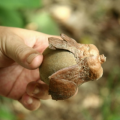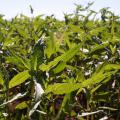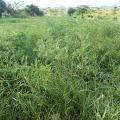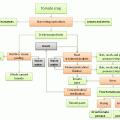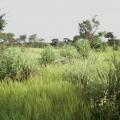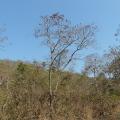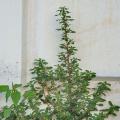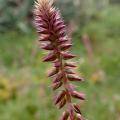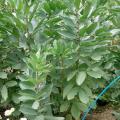Feedipedia news
Feedipedia will participate next week in the Global Forum for Animal Feed and Feed Regulators convened by the Food and Agriculture Organization (FAO) in Rome. Our team will deliver a presentation on the afternoon of 2 October titled Innovative protein and feed sourcing: an ongoing EU concern and will host a side event during lunch on 3 October entitled Feedipedia: Knowledge for All, Supported by All?
Explore Feedipedia
|
The colocynth (Citrullus colocynthis (L.) Schrad.) is a member of the cucurbits... Read more |
Borneo tallow nut oil cake is the product resulting from the oil extraction of the fruit... Read more |
Annatto (Bixa orellana L.) is a tropical and subtropical perennial shrub or... Read more |
|
Niger (Guizotia abyssinica (L. f.) Cass.) is an oilseed crop cultivated in... Read more |
Marula (Sclerocarya birrea (A. Rich.) Hochst.) is a multipurpose deciduous... Read more |
Bengal indigo (Indigofera arrecta Hochst. ex A. Rich.) is a multipurpose, stout... Read more |
|
Tomatoes (Lycopersicon esculentum Mill.) are one of the major vegetables and... Read more |
The bitter gourd (Momordica charantia L.) is an horticultural species from the... Read more |
Gamba grass (Andropogon gayanus Kunth) is a perennial leafy grass of tropical... Read more |
|
Zornia (Zornia glabra Desv.) is a perennial legume grown for forage in Latin... Read more |
False Rhodes grass (Trichloris crinita (Lag.) Parodi) is a perennial grass... Read more |
Blackseed grass (Chloris virgata Swartz.) is a tropical and subtropical annual... Read more |
|
Hairy indigo (Indigofera hirsuta L.) is a subtropical and tropical legume shrub... Read more |
Sesame (Sesamum indicum L.) is a tropical and subtropical plant cultivated for... Read more |
African sheepbush (Pentzia incana (Thunb.) Kuntze) is an aromatic rounded... Read more |
|
Asna (Terminalia elliptica Willd.) is a medium to large deciduous tree native to... Read more |
The wild amaranth (Amaranthus graecizans L.) is an annual, summer growing herb... Read more |
Signal grass (Brachiaria decumbens Stapf or Urochloa decumbens (Stapf)... Read more |
|
Achyranthes aspera L. is an herbaceous plant from the tropics and subtropics, ... Read more |
Faba bean (Vicia faba L.) is a legume crop grown primarily for its edible seeds... Read more |
Quinoa (Chenopodium quinoa Willd.) is an Andean pseudo-cereal crop that is... Read more |
Pages
Recent resources
 Opinion paper: Phasing out of the aid provided to the livestock sector during expectedly recurrent emergencies
- Makkar, 2024. animal
Opinion paper: Phasing out of the aid provided to the livestock sector during expectedly recurrent emergencies
- Makkar, 2024. animal
Open access opinion paper that makes a case that the emergency aid do more harm than good to African countries. It is valid for all the fields of agriculture but has direct consequence for animal agriculture. The context here is the aid provided during emergencies that are foreseeable recurrent.
The role of livestock in food security, poverty reduction and wealth creation in West Africa
- Molina-Flores et al., 2020. Food and Agriculture Organization of the United Nations Accra, 2020
Livestock is key to 377 million people in West Africa and in some countries, up to 60% of the population is involved in livestock production. The demand for animal products is increasing with population growth, urbanization, growing middle class, and due to shifting consumer preferences towards animal products. To meet this growing demand, countries in West Africa must engage in accelerated sustainable livestock production undertaking. Livestock development is key to eradicate hunger and poverty. This book attempts to provide up-to-date, and reliable information on the potentials, opportunities, and challenges of the livestock subsector in West Africa.
Pulses and their by-products as animal feed
- Sherasia et al., 2017. In: Calles, T.; Makkar, H. P. S. (Eds), FAO, Food and Agriculture Organization of the United Nations, Rome, Italy
This document provides a state-of-the-art review of the recent research (published and unpublished) on the use of pulses and their by-products as animal feed. It aims at raising awareness on the use of pulses and their by-products. It highlights the nutritional role of pulses and pulse by-products as animal feed and is a contribution to the legacy of the 2016 International Year of Pulses. This document will further enhance the use of these feed resources in other continents, besides Asia, where many pulse by-products are simply dumped. It is also expected that the synthesis presented contributes to make the use of pulses and their by-products as animal feed more efficient. This document will be useful for extension workers, researchers, feed industry, policy-makers and donors alike.












